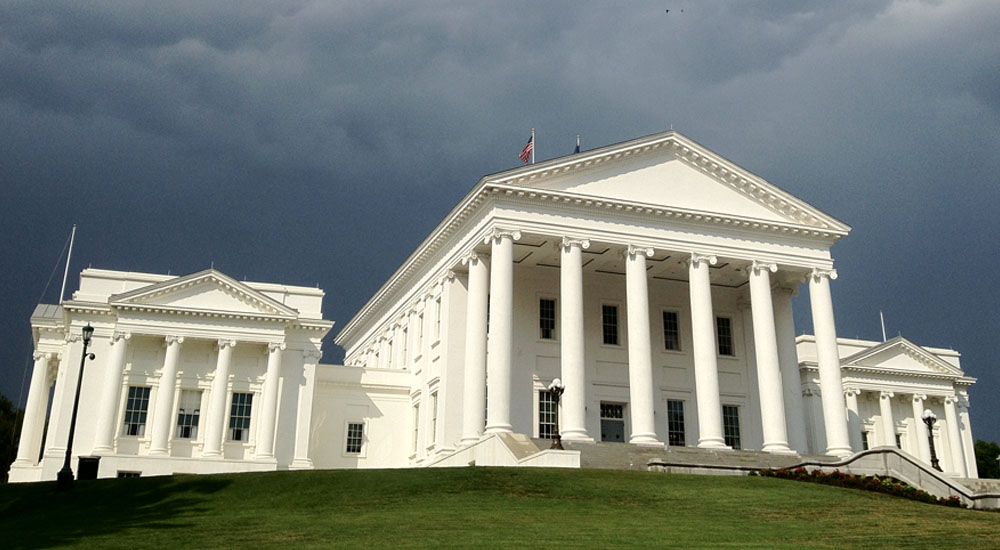Virginia’s taxpayer-funded coffers are now full after 6.3 percent more tax revenue was brought in to the bank than last year, astonishingly higher than the 3.4 percent increase forecast for the fiscal year ending June 30. The $552 million revenue surplus, backed by a surge in payroll and sales tax collections means the economy is growing, but actually equates to less than half of the surplus. The biggest booster for state revenue was non-withholding income tax collections, the unpredictable type of revenue from estimated payments on capital gains, and other interest income which added over $400 million.
In a press release, Speaker of the House of Delegates Kirk Cox (R-Colonial Heights) credited President Trump’s Tax Cuts and Jobs Act as one of the main drivers of Virginia’s revenue growth. Growth was also credited to, “a resurgence in defense spending, and the Republican-led General Assembly’s pro-business policies,” Speaker Cox said, leading to strong economic growth in the Commonwealth.
Almost all of the surplus cash will be added to the Commonwealth’s “rainy day fund,” strengthening Virginia’s triple-A bond rating. For the foreseeable future, Cox’s Republican majority is set to build on this year’s bank roll, ensuring a well-funded state government. “Republicans in the House of Delegates will continue to promote a conservative approach to the state budget, and strong, pro-growth policies that got us here today,” he added.
The road to completing a biennium state budget was tumultuous, fraught with political hurdles, ending with the passing of Medicaid expansion. Once of the biggest obstacles was the fight over whether the state would accept federal funding to expand the program for 300,000 low-income Virginians as directed under the Obama-era Affordable Healthcare Act (ACA). At the center was nearly $400 million in state money that the federal dollars would free up for other uses.
Some state lawmakers warned that this year’s strong tax revenue numbers could be a rare occurrence, claiming it would not make sound financial sense to build a budget around them, considering a large portion of the increased revenue is from estimated payments. Refunds to taxpayers could change the final results, marked by cautionary commentary for the state’s representative in the General Assembly. Nevertheless, when the $115 billion spending plan was finally adopted in late May, the legislature included the federal money for Medicaid expansion, dedicating most of the increased tax revenue to rainy day funds.
“This significant surplus will substantially increase the Commonwealth’s cash reserves in order to protect taxpayers against a future economic downturn,” Governor Ralph Northam said Thursday in a report from the Washington Post.
The tax revenue numbers, however, are not all exceedingly positive. Sales tax increases came in just one tenth of a percent above the forecast rate. Payroll taxes increased by 5.4 percent – greater than the projected 3.5 percent – though, half of the increase came because the July 4 holiday fell during the middle of the business week, “and business tax payers submit[ted] payments early,” pursuant to a report from the governor’s office.
Moreover, corporate income tax collections were projected to rise to 5.7 percent, but came in at lower than expected, with just a 4.2 percent year-over-year increase. Regardless, with Virginia’s unemployment rate at a post-recession low – 3.2 percent in May – the revenue bump is evidence of increasing economic strength.
Virginia’s economy has been lacking sufficient recovery numbers since the 2008 recession, mainly due to large cuts in federal spending in the areas of defense contracts. With President Trump at the helm, new contracts have been reviving the Hampton Roads areas with tens of billion of dollars of new defense spending.
Growth in Northern Virginia and the Richmond capital area has been strong, but the rural areas of the Shenandoah Valley and Southwest Virginia have lagged as manufacturing and coal extraction was diminished during the Obama Administration. With new expansion in the aforementioned industries, the slow comeback may begin to subside as growth in previously blighted areas has increased due President Trump’s vow to bring back American manufacturing and decrease energy dependence on foreign nations.

